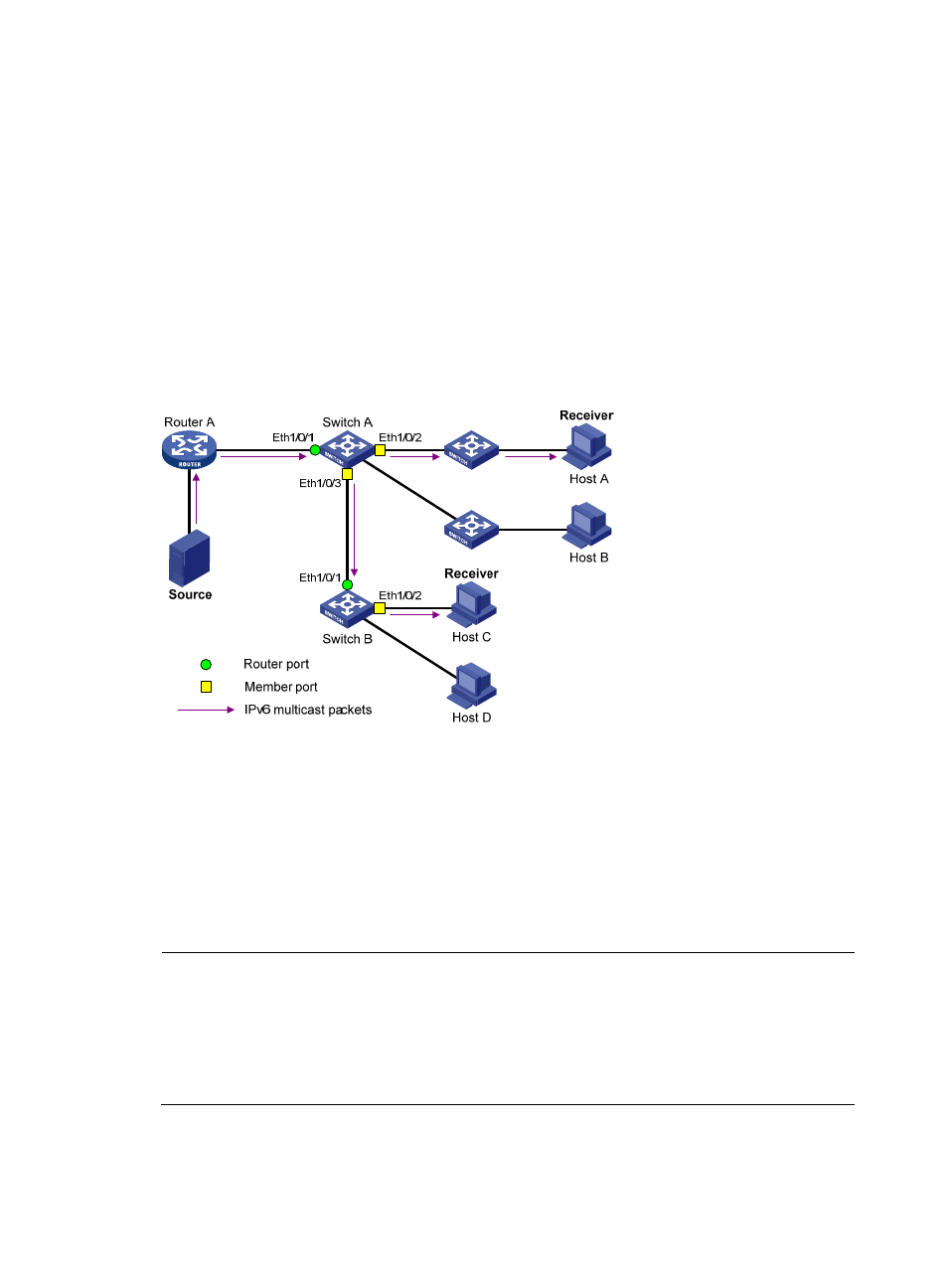Basic concepts in mld snooping, Mld snooping related ports – H3C Technologies H3C S3100V2 Series Switches User Manual
Page 67

59
MLD snooping forwards multicast data to only the receivers that require it at Layer 2. It brings the
following advantages:
•
Reducing Layer 2 broadcast packets, thus saving network bandwidth.
•
Enhancing the security of multicast traffic.
•
Facilitating the implementation of per-host accounting.
Basic concepts in MLD snooping
MLD snooping related ports
As shown in
, Router A connects to the multicast source, MLD snooping runs on Switch A and
Switch B, Host A and Host C are receiver hosts—namely, IPv6 multicast group members.
Figure 22 MLD snooping related ports
Ports involved in MLD snooping, as shown in
, are described as follows:
•
Router port—A router port is a port on the Ethernet switch that leads the switch toward the Layer-3
multicast device—DR or MLD querier. In the figure, Ethernet 1/0/1 of Switch A and Ethernet 1/0/1
of Switch B are router ports. The switch registers all its local router ports in its router port list.
•
Member port—A member port—also known as “IPv6 multicast group member port”—is a port on
the Ethernet switch that leads toward multicast group members. In the figure, Ethernet 1/0/2 and
Ethernet 1/0/3 of Switch A and Ethernet 1/0/2 of Switch B are member ports. The switch registers
all the member ports on the local switch in its MLD snooping forwarding table.
NOTE:
•
In this document, a router port is a router-connecting port on the switch, rather than a port on a router.
•
Unless otherwise specified, router ports and member ports in this document include static and dynamic
ports.
•
On an MLD snooping-enabled switch, the ports that received MLD general queries with the source
address other than 0::0 or IPv6 PIM hello messages are dynamic router ports.